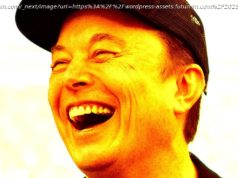CEO Elon Musk warned about the coming “production hell” for the Model 3. Factory workers say they’ ve already been there – and want safety conditions to improve.
FREMONT — Tesla CEO Elon Musk this month promised his company would deliver the new Model 3 to almost a half-million waiting customers, and guaranteed employees would go through “production hell.”
For many, it’s a return visit.
The company’s last stretch of manufacturing hyper-stress — the months leading up to the September 2015 delivery of the Model X — brought long hours, mandatory overtime and an 11 percent jump in worker time missed due to injury.
Injuries reported by workers also rose about 5 percent, well beyond auto industry averages, according to an analysis of federal statistics. Production workers say they’ re concerned about the potential for more injuries and burnout, while earning less than the average autoworkers across the country.
“We had long hours. It took a toll on a lot of us, ” said Michael Catura, a Tesla factory worker who started in April 2014. “I hope that we learn from the mistakes.”
Tesla executives say they made their share of mistakes — and aren’ t eager to repeat them. The company has already re-engineered its work flow and made the Model 3 easier to assemble.
“While adding a new model to any factory is a huge challenge and a lot of hard work, ” a company spokesman said, “meeting our production goals and ramping Model 3 will never take priority over making sure our workers are safe.”
Tesla faces a crucial test in the next year, turning out at least four times more vehicles than ever before while pursuing a still elusive profit. The company has placed an enormous bet on the lower-cost Model 3 sedan to grow and conquer a nascent electric vehicle market.
Tesla has been spending an average of $100 million a week on capital expenses, mostly to manufacture the Model 3, according to chief financial officer Deepak Ahuja.
With 455,000 orders for the Model 3, which starts at a base price of $35,000, the company has a months-long backlog to build cars. Deliveries began last month, but new orders will not be filled for another 12 to 18 months, according to the company website.
Company executives say the Model 3 is designed to be much simpler to build. Compared to the Model S and Model X, company chief technical officer JB Straubel said, building the Model 3 “is vastly more automated.”
Several Tesla workers in February began to speak publicly about injuries and organizing a union. Last month, a group wrote an open letter to the Tesla board of directors asking for more emphasis on worker safety.
“One of the most serious issues concerns our health and safety, ” the workers wrote. “Accidents happen every day. Severe incidents frequently impact morale and cause delays in production.”
An analysis done for Tesla factory employees by Worksafe, a Bay Area nonprofit affiliated with unions that advocates for healthier work places, found the Tesla factory floor was less safe than the average automobile factory.
In 2015, the company had a total recordable incidence rate, a uniform measure of workplace injuries, that was nearly one-third higher than the auto industry average. Tesla workers also spent more than twice as much time as the average auto worker out of work, on restricted duty or transferred away from their normal tasks because of injuries.
Doug Parker, executive director of Worksafe, said Tesla should work with its employees and institute a health and safety plan before new production starts.
“Employee involvement and employee voice is an important factor, ” he said.
Federal statistics show U. S. autoworkers are most prone to repetitive stress injuries.
Monroe Keyserling, a University of Michigan professor of industrial and operations engineering, said automakers design new model production lines for maximum efficiency and worker safety.
A simple thing like an ill-fitting part — which requires more force or twisting to secure — can slow down production and increase injury risks to workers, he said. Poorly designed work stations can also throw workers off-balance and add risk.
“That’s part of the growing pains of manufacturing a new model, ” he said.
Tesla acknowledged its first pell-mell productions of the Model S and X were tough on workers.
“As we look at our safety record in prior years, we realize that we have not been perfect, ” the company wrote in a May blog post. “No car factory is perfect, but particularly given that Model S and X were the first cars we built at more than tiny volumes, we fully acknowledge that they were not designed for ease of manufacturing — far from it.”
Musk put so much emphasis on improving production in 2015 that he decamped to the end of the Model X production line, grabbing a sleeping bag to rest in a conference room.
Hourly workers felt the Model X pressure, too.
Branton Phillips, 53, started at Tesla in March 2014. The next year, the whole factory was immersed in Model X work, he said. During one stretch, Phillips worked 13 days straight. Many others worked 21 straight days, he said.
Supervisors rolled through the factory with boxes of energy drinks and candy bars to fuel the 12-hour shifts.
“That was the big push to hit our numbers, ” said Phillips. “It was chaotic.”
Phillips, a safety coordinator in his area for several months, said the long hours led to haphazard production habits. Not enough tasks were standardized to lower the physical stress, he said.
Hai Ngyuen said the Model X brought long hours and repetitive stress injuries from bolting rivets onto packs. Nguyen, 38, inspects, seals and moves battery packs to the production line. Colleagues who complained about injuries could face consequences, Ngyuen said.
“I worked with pain, ” he said, “but I didn’ t let anyone know. I didn’ t want to get fired.”
Factory worker Catura has seen few changes in work culture, he said. “We’ re still a numbers company, ” he said, referring to numerical production goals. “We’ re all about hitting the numbers.”
Tesla executives say they’ ve learned many manufacturing lessons from previous vehicles.
Musk said last month as he delivered the first Model 3s that the high-stress production would last at least six months.






